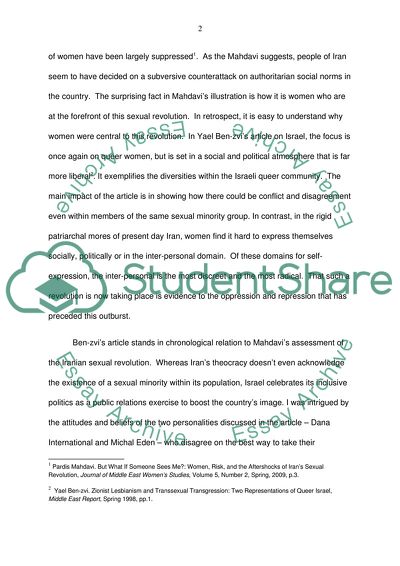The Implications of the Sexual Revolution in Iran Essay Example | Topics and Well Written Essays - 1500 words. https://studentshare.org/gender-sexual-studies/1795568-the-implications-of-the-sexual-revolution-in-iran
The Implications of the Sexual Revolution in Iran Essay Example | Topics and Well Written Essays - 1500 Words. https://studentshare.org/gender-sexual-studies/1795568-the-implications-of-the-sexual-revolution-in-iran.


